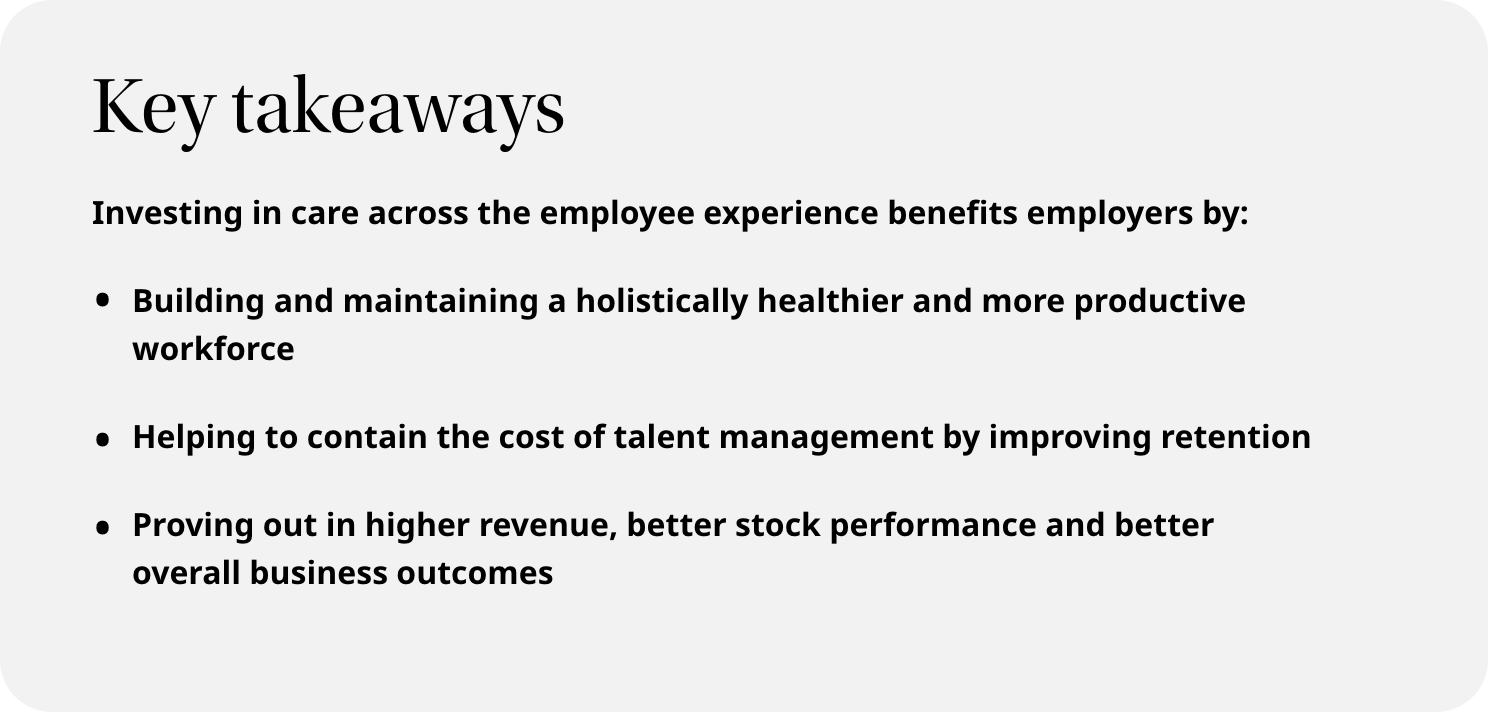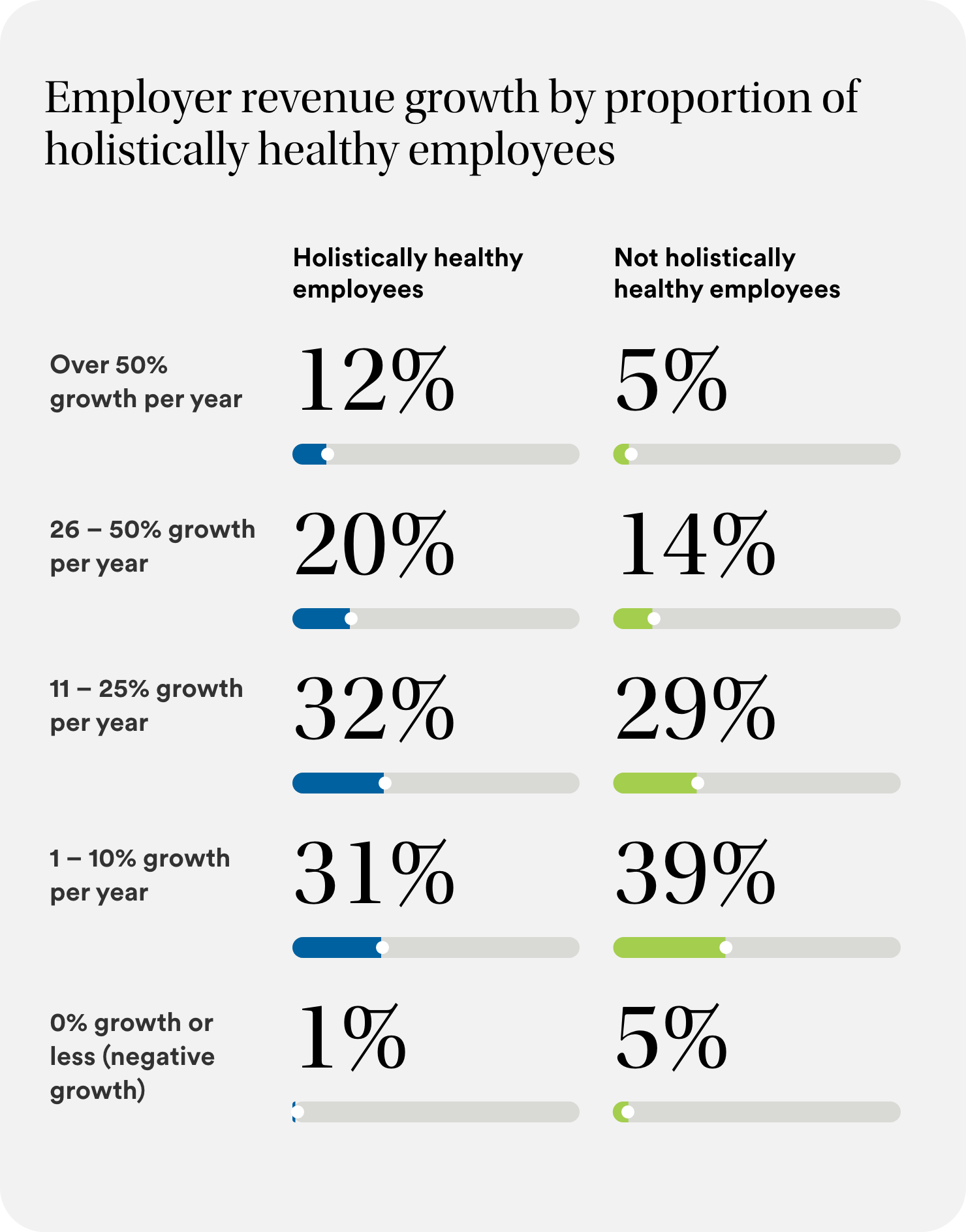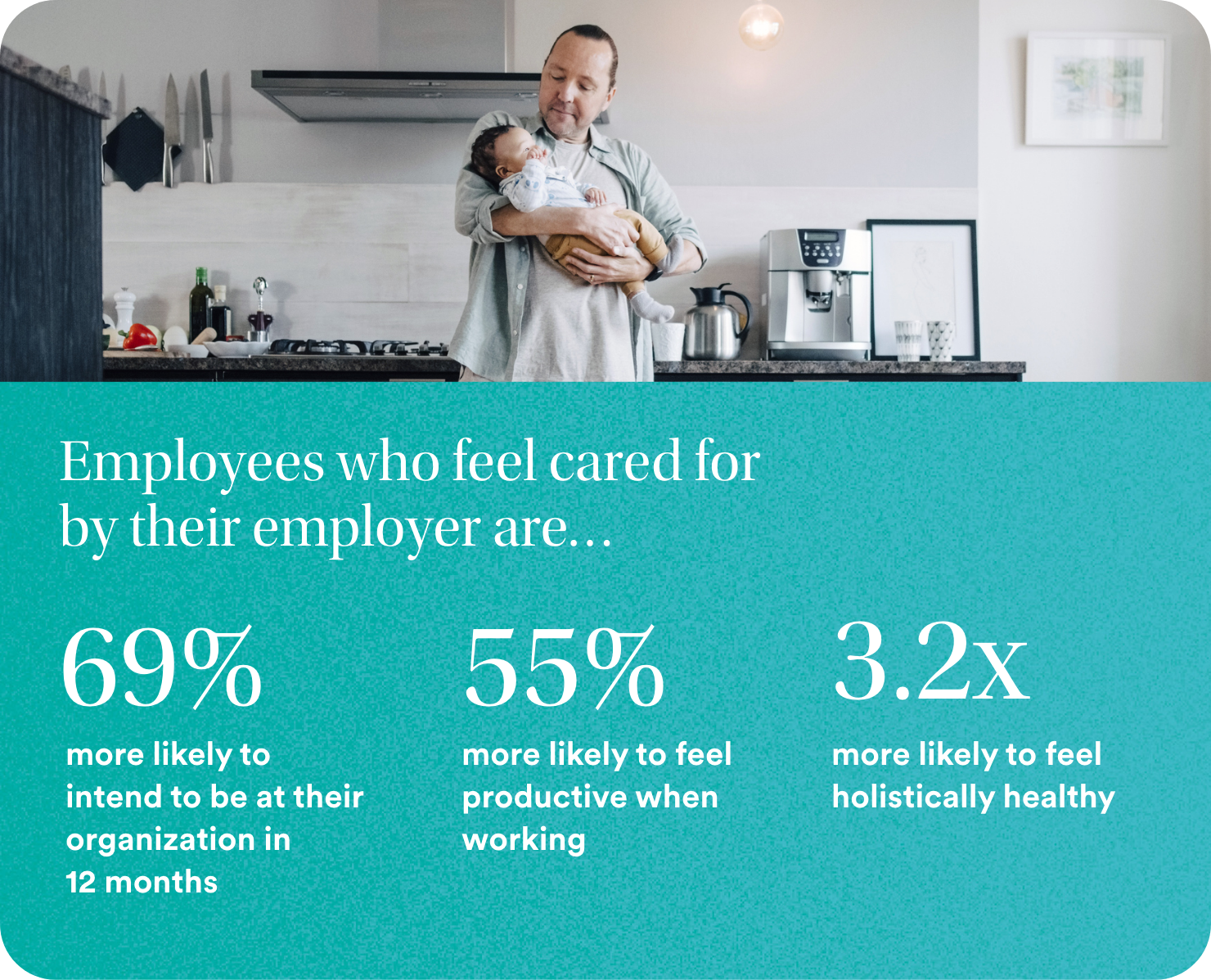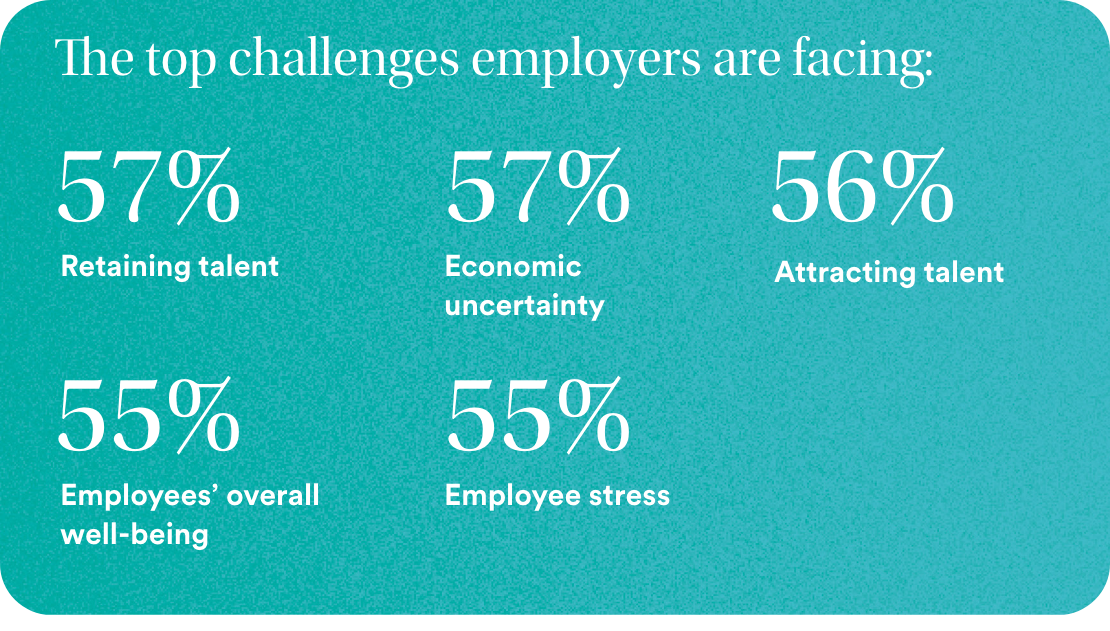“Always-on” employee care is emerging as a powerful strategy for driving holistic employee well-being . . . and better business outcomes.
Is it possible to determine if investing in delivering care across the entire employee experience has a material impact on business performance? If so, how can companies provide care in a way that maximizes the return on the investment they make? Most importantly, will the care that’s being provided be perceived by employees as what they need and how will it impact their productivity?
These are some of the questions our 2024 Employee Benefit Trends Study set out to answer. For more than two decades, this report has tracked important, even seismic, shifts in the workplace and the profound ramifications for employment relationships, worker well-being, and how employers can utilize benefits programs in response.
The social, political and economic upheaval battering the collective psyche of American workers and resulting impact on the companies that employ them continue unabated. Thus, it’s more important than ever for organizations of all sizes to provide solutions that boost loyalty, engagement, productivity, and make workers feel more valued and appreciated. Why? Employerprovided resources and strong organizational cultures can help individuals prepare for the unexpected and provide a sense of stability for workers. Such support can feed individual success and drive business outcomes which enable organizations to survive and even flourish during times of uncertainty and volatility.
Effectively delivering care facilitates productivity and loyalty.
Workplace well-being is increasingly top of mind for employees. In fact, for many workers, it’s a part of their experience that’s become every bit as important as their salary. Yet according to our study, fewer than two-thirds of employees think their employer demonstrates care about their circumstances, challenges and needs1.
More than ever, employers face rising pressures to meet the demand for employee well-being. And in an ever more diverse workforce with a rapidly evolving range of needs, off-the-shelf solutions won’t suffice. Employers require strategically tailored approaches to meet the full range of needs across the workforce.
The good news is there’s a reward for companies that are responsive to those demands. Employers that show the foresight and commitment to invest in delivering care across the employee experience (both in and outside of the workplace) have employees that are more inclined to remain in their roles and more likely to enjoy their work.
The effects of those positive feelings can show up in a company’s bottom line; our research as well as that of other studies validates the business case for employee care. As you can see in the chart below, organizations with holistically healthy employees projecting annual revenue growth of 11% or more clearly outnumber employers with a less healthy workforce. Independent research has also indicated a strong positive relationship between workforce well-being and critical financial metrics, such as valuation, return on assets and profitability, as well as stock price.1
External research further reinforces our findings that employee care provides a significant return as a strategic business investment. Among firms with top 100 Work Well-being scores:
- 20% higher stock price compared to S&P 5002
- 90% of companies that track their wellness spending see a positive ROI3
- 87% of leaders say that prioritizing employee wellbeing gives their organization a competitive advantage2
While these conclusions may raise a skeptical eyebrow, the logic informing them is sound. The more satisfied employees are that their employers support and care for them. Our study found that when employees feel cared for, they are 1.3x more likely to be loyal, and 1.2x more likely to be productive. Benefits can be a strong foundation for a work environment that promotes that kind of employee well-being, even during stressful times. It logically follows, therefore, that a more stable workforce will help companies contain the considerable costs associated with employee turnover and days of productivity lost to employee illness and stress while enabling them to stay more focused on improving output and meeting core business objectives. In a recent podcast called The ROI of Wellness, Wellhub CEO Cesar Carvalho discussed the kind of benefits companies can anticipate with a committed investment in employee care. So, with that in mind, how can employers effectively reap the bottom-line benefits of providing it?
How employers can provide “always-on” care for employees and why it matters.
When you first hear it, the idea of providing “always on” care sounds like a heavy—and expensive —lift. But what does that mean in practice? Simply put, it is an employee experience and work environment designed to support a broad range of needs both in and outside of the workplace. Our research shows that employees now expect employers to deliver care in response to both professional and personal circumstances given the impact of various experiences on employee well-being and their attitudes toward their jobs and employers.
While it’s true that investing in it can be a significant commitment, it’s just as true that doing so will pay off in gaining the goodwill of employees who are more likely to feel that their needs are being met and more apt to be productive. By successfully navigating the complex and diverse needs of their workers, companies are more likely to be perceived as desirable places to work, retain their talent, and avoid the costly consequences of frequent turnover.
It sounds simple enough, but how can always-on care be successfully woven into company culture? Knowing where and when to apply starts with developing strategies designed to support relatively common and predictable occurrences: job changes, promotions, starting a family and preparing for retirement. Established policies and benefits usually meet employee expectations for care in these instances, but the “ready for anything” feel of always-on care strategies is what takes it to the next level. When unexpected events—such as sudden illness and financial setbacks —companies are there to provide support. Flexible work schedules, financial wellness resources, mental health workshops and the like can be integral to always on care strategies.
The reliably in-the-moment availability of always-on care delivery is another differentiator. Life happens and employees feel especially supported in situations that don’t have fixed timelines and may have extended durations. That consistency of care is highly valued for expected and unexpected scenarios. The key is for employees to not only be aware of the benefits available to them, but to know how to use them in key moments without friction or frustration.
In some instances, appropriate care responses will be unambiguous. Go-to offerings, like training, wellness programs and insurance benefits are low hanging fruit. Others call for more outside of the box thinking. Workplace enhancements, flexible work arrangements, even strategically communicating the company’s organizational mission underscore the employer’s commitment to innovating in the service of providing care. Adjusting the mix of offerings and elements of the employee experience provides employees with tangible proof that they are supported both at and outside of work.
The payoff: holistically healthier employees, financially healthier companies
The financial pressures companies are facing come from all angles and employers of all sizes are feeling the pinch when it comes to managing their workforce. Some 89% of them cite controlling the costs of core benefits (e.g., health insurance) and reducing HR administrative costs as important objectives. In some cases, that means that they may feel forced to make hard choices when it comes to offering employees the benefits or support they’d like.
Yet, our research found that when managers deliver care consistently, employees are 2.2x more likely to feel cared for personally - indicating that “always-on” care models pay off for employers and employees—which is why organizations should consider investing in them. Enhancing employees’ perception of care in areas where they do not feel particularly cared for can have a powerful impact on talent management outcomes—a critical cost driver for companies. Employees who feel cared for report higher levels of holistic health and score higher on success indicators in both work and life.
As macroeconomic factors continue to shape individual workplaces, employers have an opportunity to keep pace with employee expectations by demonstrating care in key moments, particularly those with outsized impacts on the overall experience.
Both employers and employees see the value of care, but there are key moments when employers are not responding to worker expectations. Companies wanting to bridge this gap will need to carefully assess strategies for different events, accounting for key moments and points in the overall employee lifecycle. Additionally, they must address not only those that occur regularly, but more unexpected events, covering both workplace and personal worker experiences.
Employers should look to build on those moments where they are having success today as stepping stones and see gaps in how they serve employees today as opportunities to shore up their care delivery where it may currently fall short. As companies continue to compete for talent and look for ways to contain costs, enhancing employee well-being with always on care promises to continue its emergence as a critical pillar that will pay increasing dividends in the years to come.





